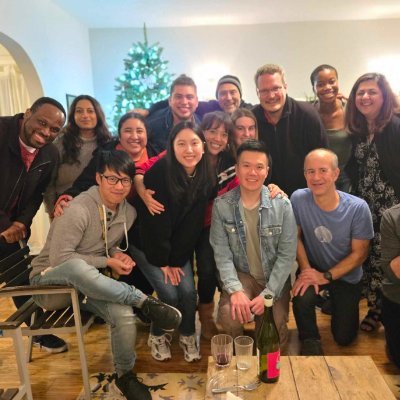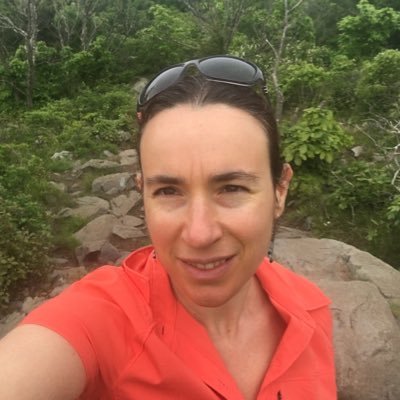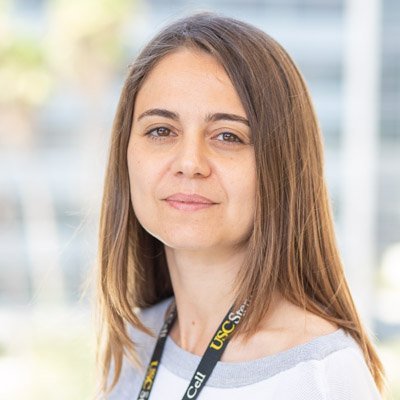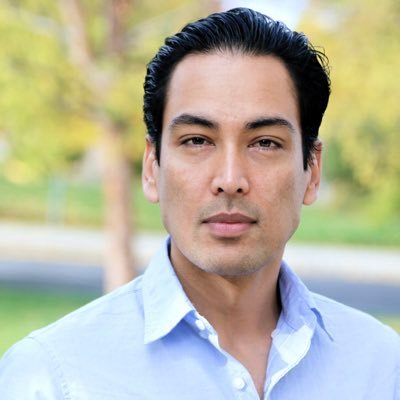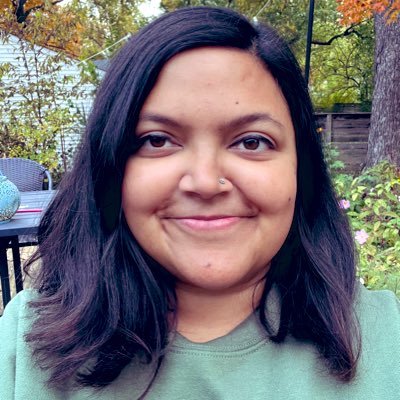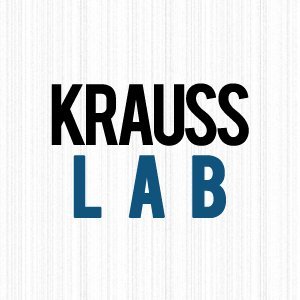
Albert E. Almada
@albertealmada
Followers
192
Following
505
Media
6
Statuses
196
Assistant Professor @USC @KeckMedUSC @USCStemCell | @Harvard @MIT @UCIrvine alum
Los Angeles, CA
Joined March 2016
Ever wonder how stem cells rebuild tissues and organs after traumatic injury? Check out our recent paper in Cell Reports to find out! https://t.co/Qnaqypo8Yh
cell.com
How adult stem cells are activated to repair tissues and organs after injury remains one of the greatest mysteries in regenerative biology. Almada et al. reveal a FOS-driven “pro-regenerative”...
0
6
16
The outer ear is a mammalian innovation but where did it come from? In our study in @Nature, @MathiThiru95 and colleagues find that the outer ear arose from modification of an ancestral gill program first originating in marine invertebrates. https://t.co/i05me2SXI4 1/n
30
497
3K
A warm welcome to Dr. Charles (Chuck) Murry, the new Chair of the Department of Stem Cell Biology and Regenerative Medicine and Director of the Eli and Edythe Broad Center for Regenerative Medicine and Stem Cell Medicine at USC! @USCStemCell @KeckSchool_USC
2
5
28
So proud of my team for our first preprint! We asked how does loss of dystrophin impact satellite cells in DMD?
biorxiv.org
Satellite cells are muscle-resident stem cells that maintain and repair muscle. Increasing evidence supports the contributing role of satellite cells in Duchenne muscular dystrophy (DMD), a lethal...
4
7
50
Are you passionate about unraveling the mysteries of stem cell regulation? The Shwartz Lab is recruiting talented and driven Postdoctoral Research Associates to embark on an exciting journey to study skin stem cell regulation with us!
1
20
20
We are delighted that our work, which describes non-synaptic function of Syngap1 in human cortical neurogenesis, has now been published in Nature Neuroscience https://t.co/I3hUAjzztU led by incredibly talented @MarcellaBirtele @DossoAshley
📢 Excited and proud to share our first preprint! We discovered a novel function for the autism-associated gene SYNGAP1 at the early stages of human cortical neurogenesis. Work co-lead by the very talented @MarcellaBirtele postdoc and @DossoAshley PhD candidate in our lab🧵 1/8
22
28
250
Variants of #SYNGAP1, an autism-linked gene previously thought only to affect synapses, may disrupt early brain development. The findings from the lab of @GiorgiaQuadrato appear in @NatureNeuro. @cureSYNGAP1 @USCStemCell @KeckSchool_USC
https://t.co/nUwKJWPtYY
1
16
26
I am thrilled to share our work on nascent RNA sequencing in single cells. I hope it will unlock the study of enhancer-gene coordination at the single-cell level. Single-cell nascent RNA sequencing using click-chemistry unveils coordinated transcription
biorxiv.org
Transcription is the primary regulatory step in gene expression. Divergent transcription initiation from promoters and enhancers produces stable RNAs from genes and unstable RNAs from enhancers[1][...
3
8
57
We are seeking a molecular biologist to work on chimeric antigen receptors. Email me at villalts@uci.edu if interested. More detail below: https://t.co/pkUdKdbd2l
jobrxiv.org
Post a job in 3min, or find thousands of job offers like this one at jobRxiv!
1
8
13
Mentoring is a mutual learning arrangement. The talented trainees make it a breeze. 🙏🏼
“Science without the overarching purpose to improve society for future generations is inconsequential.” Sharp Lab postdoc @DigbijayMahat talks to @MIT_Spectrum about the transformative power of mentorship. https://t.co/3v2k1Eeleq
1
3
21
Excited to see this story driven by @aneesha_dg now out in @PNASNews. Thanks to all collaborators here at IU and at Mayo Clinic for making this work possible. @IUCancerCenter @IUICMH @MayoClinic @MayoGradSchool
Just published! A potential “goldilocks” target in the TGF-beta pathway in cancer cachexia.This one is special. It’s my first co-corresponding paper with @jdoles99.I’m happy to introduce the very talented Daniel Gibbard to #myotwitter
https://t.co/wmVrwyCtIQ
@IUCancerCenter
2
3
32
I am super proud of my first PhD student, Alma Zuniga Munoz, who was awarded the 2023 HHMI Gilliam Fellowship! Check out this article that highlights Alma’s scientific trajectory. Fight on! @HHMINEWS #GilliamFellows @USCStemCell @KeckSchool_USC
https://t.co/2kgfhS4LNl
stemcell.keck.usc.edu
Alma Zuniga Munoz, a student in USC’s PhD program in Development, Stem Cells, and Regeneration, is used to being the first. She’s a first-generation American, the first member of her extended family...
0
3
42
https://t.co/ziFUAPCbCx I'm excited to share with you our latest research on protein synthesis and tissue regeneration led by our amazing former postdoc @OZhulyn who is now an assistant professor @SickKids
12
102
394
Pleased to share our new paper "Restoration of CPEB4 prevents #muscle stem cell #senescence during #aging"! Congrats to Wenshu Zeng and Wenxin Zhang who put together this incredible amount of work! @Dev_Cell
https://t.co/5s7XKr1Z1N
cell.com
Zeng and Zhang et al. analyze a pre-senescent proteome and identify an impaired mitochondrial proteome and activity in geriatric muscle stem cells. Mitochondrial defects induce cellular senescence,...
0
9
45
Senta Georgia @ USCStemCell and @ChildrensLA reflects on #TitleIXat50 and becoming the first Black PhD scientist to earn tenure @KeckSchool_USC. @GeorgiaLab_USC #TrojanTrailblazers
stemcell.keck.usc.edu
Senta Georgia reflects on Title IX and becoming the first Black PhD scientist to receive tenure at the Keck School of Medicine of USC.
0
4
15
🗣🎙WE'RE HIRING! The Krauss lab is recruiting a postdoc to study cytoskeletal regulation in muscle stem cell quiescence and activation. The community at @IcahnMountSinai is vibrant, collaborative, and passionate! Please RT and share with colleagues🤩
3
35
52
Looking for a new Research Technician to join the Lindstrom Lab! Lots of opportunities to grown in this position. The research is at the intersect of studying how organs form and making artificial kidneys from stem cells. https://t.co/kiKevTPNEE
0
4
9
Excited to share our new paper published online at @nature! Congrats to the team, led by super talented students @JordanKesner1 and @chen_ziheng_cmu
31
113
598
Meet @YuliaShwartz, a new faculty member @USCStemCell. Her lab studies the mechanisms that control stem cell behavior in homeostasis, stress and aging, using the skin as a model. @KECKSchool_USC
stemcell.keck.usc.edu
When USC Stem Cell scientist Yulia Shwartz experiences the thrill of scientific discovery, she often thinks of a line that Charles Darwin wrote in The Voyage of the Beagle: "every traveller must...
1
9
45
Thrilled to share our paper just out @NatureComms. The expression of nearly half of all age-altered genes in muscle stem cells (MuSCs) from aged mice can be restored (transcriptionally rejuvenated) by their in vivo exposure to a young niche environment.
14
45
206

